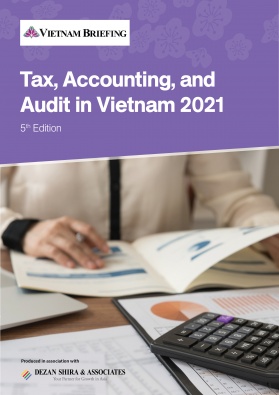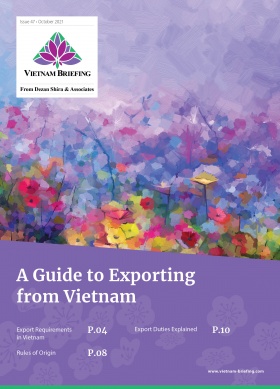Tax Audit in Vietnam: How to Prepare
- As the end of the year approaches, businesses should prepare for a tax audit to ensure they are not subject to any surprise tax exposures or liabilities.
- Tax authorities are likely to strictly scrutinize businesses due to a shortfall in tax revenue caused by the pandemic and tax incentives.
- Vietnam Briefing outlines how businesses can prepare as well as common focus areas that are likely to get scrutinized.
Taxation is a major component of Vietnam’s state budget revenues and as the country’s budget deficit increases, taxpayers and enterprises will continue to face increased scrutiny from tax authorities trying to meet their revenue targets.
In addition, the pandemic has caused significant difficulties to businesses with a shortfall in the collection of taxes due to several tax incentives and tax reductions. Therefore, it is imperative for businesses to be aware of non-compliance on tax issues as this can affect their cash flow. Tax authorities are likely to increase scrutiny in order to meet a shortfall in tax revenues.
As per the Ministry of Finance, tax collection in the first six months of 2020 accounted for 43.9 percent, an 11.1 percent decrease compared to the same period in 2019, which was the lowest in the previous seven years.
Vietnamese tax authorities will enforce tax collection using tax audits. As mentioned in our previous articles, the tax system requires the business entity to self-assess their tax liabilities and exposure. This will subsequently be checked by the tax authorities.
Businesses using tax audit plans should look at how to prevent tax loss, transfer pricing, tax evasion, tax debts, as well as high-risk businesses.
Common risk areas during a tax audit
The most common areas where the tax authorities are likely to challenge and scrutinize are:
Corporate income tax
- Vietnam has a number of CIT incentives. However, tax authorities may challenge incorrect incentives applied to new or expanded projects;
- Offset profit and loss between business activities and losses carried;
- Interest expenses for companies having transactions with related parties;
- Inventory/warehouse stock discrepancies;
- Write off of bad debts which have occurred in the previous year;
- Employment costs and due to employees laid off; and
- Intragroup service engagements without adequate supporting documents and substantiation.
Value-added Tax (VAT)
- Difference of revenue in VAT/CIT reconciliation;
- Input VAT on stock discrepancies;
- Output invoices issued for promotional goods or gifts; and
- VAT on discounts.
Personal income tax (PIT)
- Differences in onshore and offshore of incomes sources of resident individuals;
- Net income and gross income;
- Housing benefits and nontaxable incomes; and
- Withholding obligations on income paid out and other types of benefits as well as remuneration paid to employees.
Foreign contractor tax (FCT)
- Withholding tax on technology transfer;
- Taxable revenues gained from supply of goods to warehouse whether inside or outside Vietnam; and
- Income from foreign contractors that have a permanent establishment or those with double taxation agreements.
Transfer pricing
- Lack of transfer pricing documentation during an audit; and
- Not adjusted transfer pricing charges due to pandemic.
Penalties
Depending on the situation tax authorities may impose the following penalties:
- 20 percent administration penalties or 1 to 3 times the evaded tax obligations for tax fraud or evasion; and
- Late payment interest at a rate of 0.03 percent on any outstanding tax payments.
Areas in focus and risk system
Taxpayers to face tax audits will be selected based on the tax probable risk (TPR) system. The TPR analyzes taxpayers’ risk information for conducting tax audits. Tax audits may focus on:
- VAT refund claiming taxpayers;
- Taxpayers with ongoing losses over continuous consecutive years or taxpayers enjoying tax relief/incentives;
- Taxpayers involved in sectors with significant revenues. It includes oil and gas, petroleum, private hospitals (medical centers), airlines, credit institutions, pharmaceutical companies, hotels and casinos, lottery companies, seaports, airports, and multinational companies;
- Firms involved in investment project transfers, capital transfers, and franchising;
- Enterprises with numerous transactions with related parties, including ones who have reported continuous losses or low-profit margins than other enterprises in the same sector;
- Companies engaged in upcoming sectors such as multi-level trading companies, gaming, digital technology-based services;
- E-commerce businesses and internet companies such as streaming sites; and
- Other sectors include real estate, construction materials manufacturers, natural resource exploitation companies, fast moving consumer goods (FMCG) companies, and automobile manufacturers/traders.
Minimizing risks and planning ahead
With growing scrutiny from tax authorities, firms need to have a tax risk management system in place to help identify the areas of tax risk in an organization. Once identified, they need to evaluate them to understand the effect and likelihood of occurrence and manage the risk to minimize tax exposure.
With regulators and tax officials taking an aggressive approach, firms and taxpayers should be proactive in nature, to reduce compliance costs and tax exposures.
With the end of the financial year approaching, businesses should carry a thorough review of areas that are typically subject to technical risks from tax audits and ensure proper tax and accounting documents.
About Us
Vietnam Briefing is produced by Dezan Shira & Associates. The firm assists foreign investors throughout Asia from offices across the world, including in Hanoi, Ho Chi Minh City, and Da Nang. Readers may write to vietnam@dezshira.com for more support on doing business in Vietnam.
We also maintain offices or have alliance partners assisting foreign investors in Indonesia, India, Singapore, The Philippines, Malaysia, Thailand, Italy, Germany, and the United States, in addition to practices in Bangladesh and Russia.
- Previous Article Vietnam-China Trade: Transport Ministry Proposes Update to Railway Link
- Next Article How Vietnam Could Gain from the Suspension of the EU-China Comprehensive Agreement on Investment































